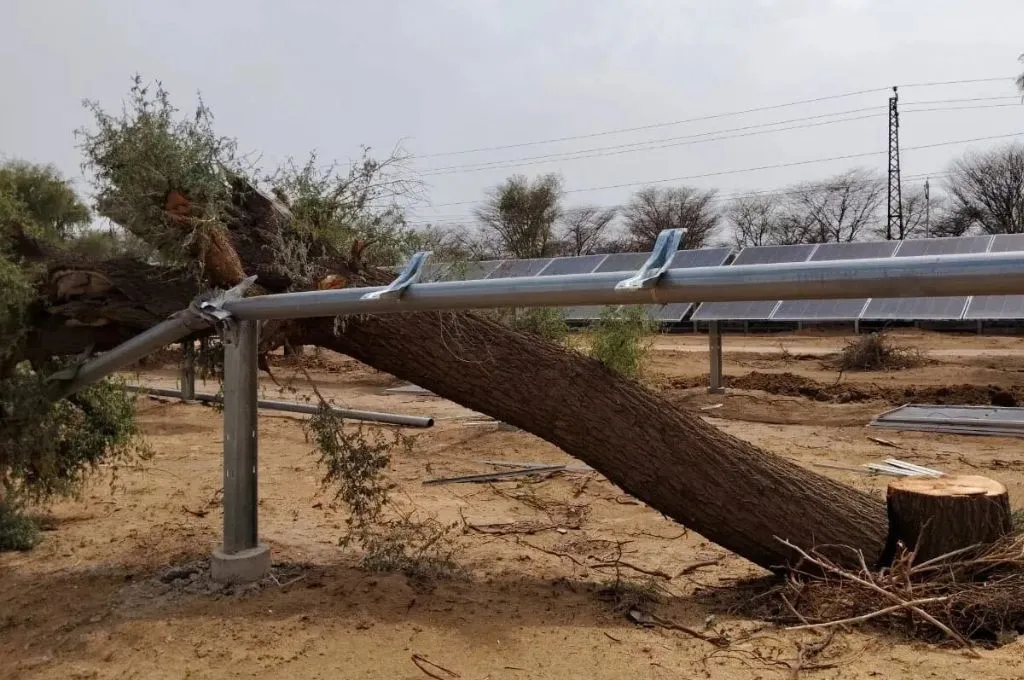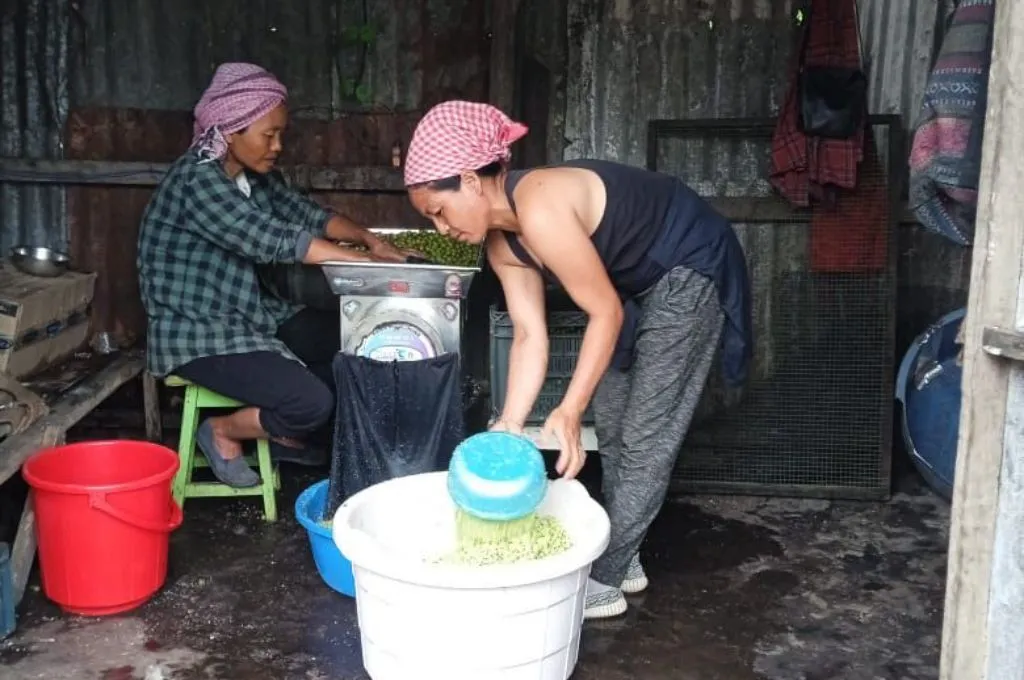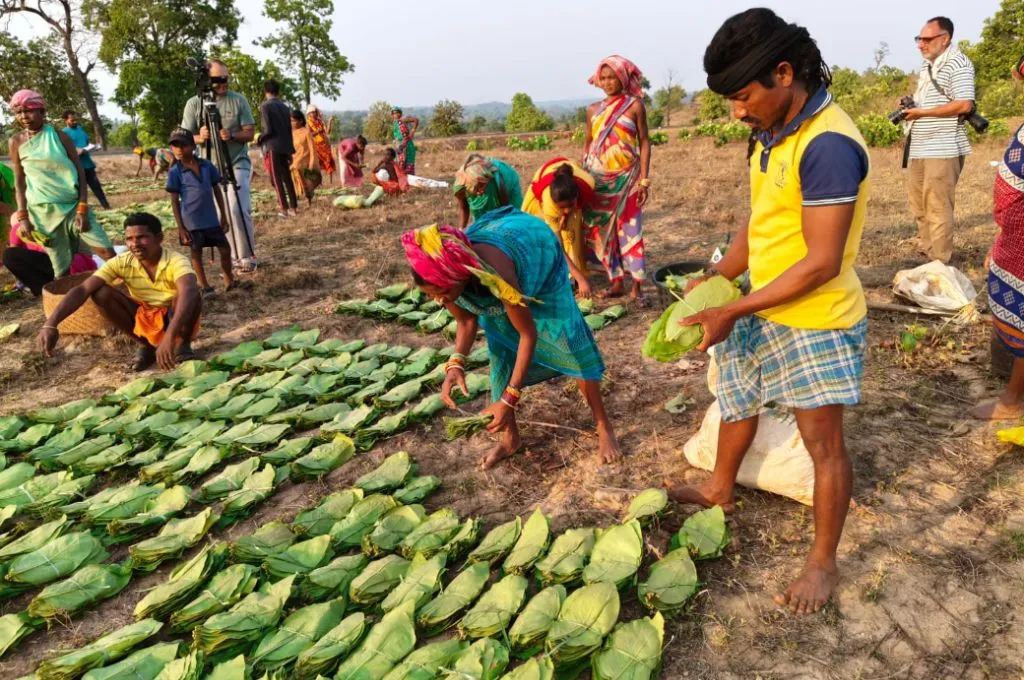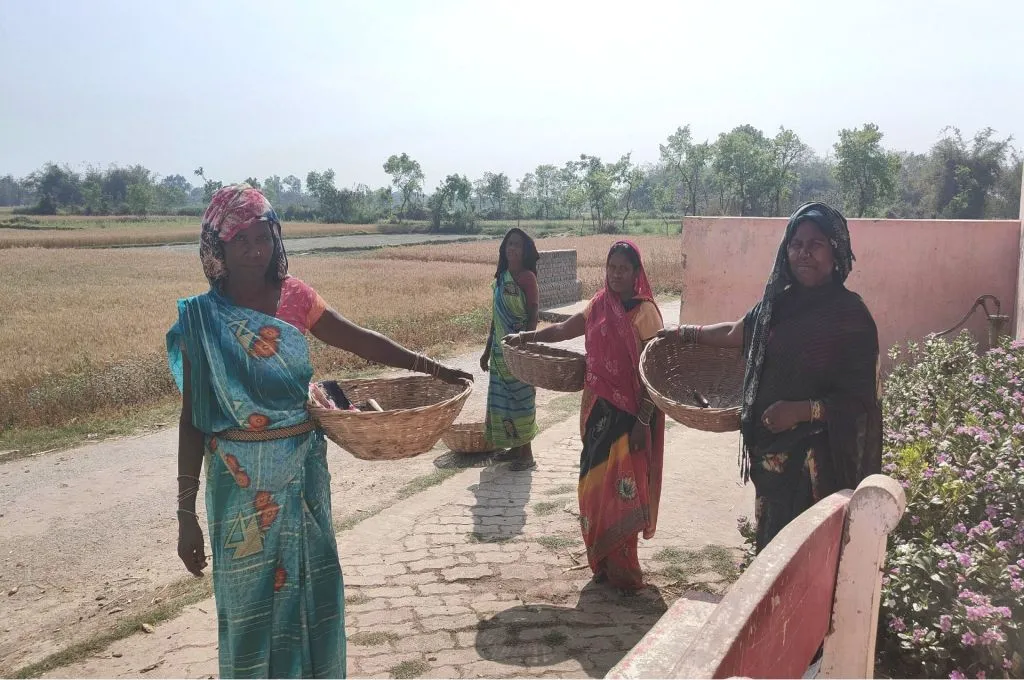READ THIS ARTICLE IN
Solar panels cast a shadow over Rajasthan’s khejri trees

I am a farmer from Naukha Daiya village in the Loon region of Bikaner district, Rajasthan. For the past few years, our land and livelihoods have been affected by the construction of solar energy plants. The government is carrying out large-scale land acquisition and cutting down trees in huge numbers in the area. One of the trees being cut is Rajasthan’s state tree, the khejri.
The khejri is not an ordinary tree. It is the identity of the desert and an integral part of life and culture here. Having grown up in its shade, I know how it enriches the soil even in dry climates, regulates temperature, and provides fodder for our livestock. Its leaves feed camels, goats, and sheep. This sustains animal husbandry in villages, which is the backbone of the local economy.
Moreover, the fruit of the khejri tree called sangri is used to make dried vegetables, which is an essential part of the local cuisine. The tree also has religious significance. For the Bishnoi community, the khejri is a sacred tree of worship. Every festival, celebration, and birth ceremony features the tree, but today it is at risk of disappearing.
For the last four years, we have been consistently protesting against the felling of khejri trees, but due to the government’s indifference and the pressure of companies, the cutting of these trees continues. This deforestation has led to rising temperatures in western Rajasthan, decline in rainfall, and an unbalanced ecosystem. Local species of animals and birds such as desert foxes, rabbits, and peacocks are suffering, and are now rarely seen in the region.
Along with the khejri, other native trees such as desi babool, morali, rohida, jaal, peepal, neem, safeda, talli, and ker are under serious threat due to clearing of land for solar plants. For us, this is not just an environmental issue—it is a crisis of our economy and livelihoods. Our farm-based income is declining. Yields of crops such as groundnut and paddy are declining due to heat and water scarcity. Farmers are experiencing increasing financial distress, while uncertainty looms over wages and land values. Moreover, these projects are shrinking grazing lands. In many areas, a lack of charagah (commons) and grazing lands is also hurting livestock rearing.
Beyond deforestation, a worsening water crisis is gripping this region. Rajasthan already faces water scarcity, but enormous amounts of water are now being used to wash the panels of solar plants. Thousands of litres from our ponds and canals are wasted in this cleaning process. This is the same water that could have been used for farming or drinking.
We agree that solar energy is important, but at what cost? The price should certainly not be the cutting of our roots, seizing of our land, and erasing of our culture.
Kishanaram Godara is a farmer from Bikaner district, Rajasthan.
—
Know more: Learn how solar plants are impacting the orans and local communities in Rajasthan’s Jaisalmer district.



